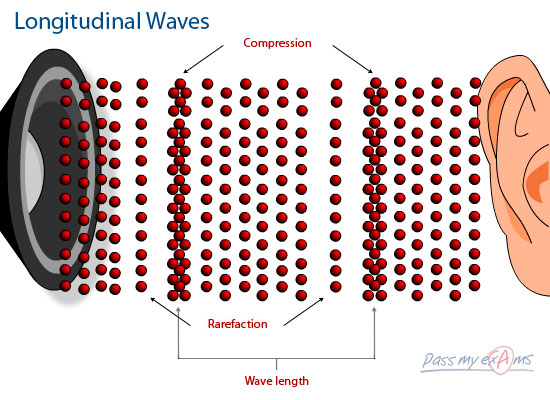What are waves?
Waves transfer energy from one point to another without transferring matter. They consist of disturbances which transfer the energy in the direction the wave travels without transferring matter.
There are two types of waves:
- Transverse waves
- Longitudinal waves
Longitudinal Waves
Longitudinal waves are wave in which the vibrations of the particles or medium in which the wave travels are in the same direction as to that in which the wave travels.
Sound waves are an example of longitudinal waves.
The animation above shows sound waves travelling through air. Energy is passed along the air molecules by the lengthways vibration of the air molecules. Thus the air molecules only move to and fro or forwards and backwards in the direction of travel of the wave. The sound energy is transferred from one molecule to another and so travels along the wave.
Amplitude and Wavelength – Longitudinal Waves

The diagram above shows the side view of a sound wave. A sound wave is a longitudinal wave. It is made up of regions where the air molecules are close together and have a higher particle density known as compressions and of regions where the air molecules are farther apart and have a low particle density called rarefactions. In a sound wave the region of compression is at a slightly higher pressure due to the air molecules being pushed together whereas the region of rarefaction is at a slightly lower pressure as the air molecules are farther apart.
The wavelength of a longitudinal wave is the distance between successive compressions or the distance between successive rarefactions.
The amplitude is the maximum distance the vibrating particle travels from its undisturbed distance.
